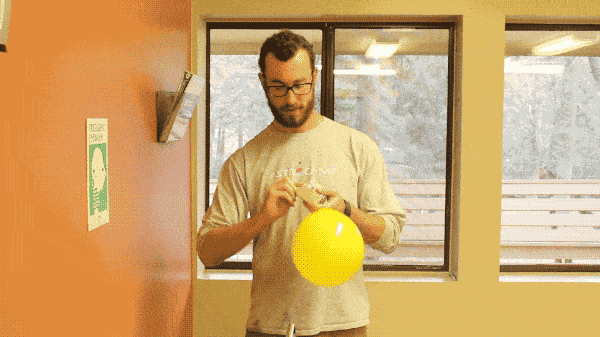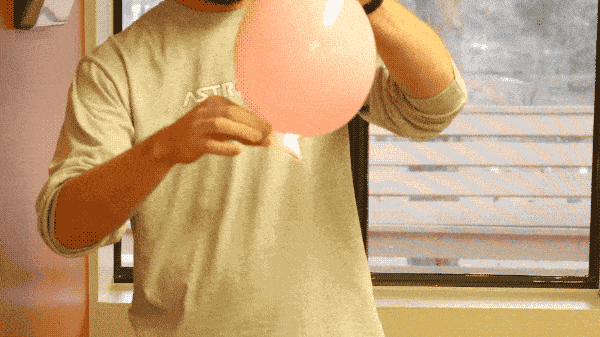
If you’ve ever brought a match to a balloon (or been in our Atmosphere and Gases class), you know that fire and balloons don’t mix, but what if you could prevent a balloon from popping when it comes in contact with fire? The answer to this dilemma can be found in the simplest place: water. A little bit of water in a balloon that is otherwise filled with air can prevent it from popping when burned. To understand why, let’s take a look at what’s happening during a balloon and match collision.
With an ordinary air balloon, the flame heats up the skin of the balloon until it weakens, popping the balloon, but when that match is held against the water-filled part of a balloon, the skin doesn’t weaken or pop.
This experiment is all down to the difference in heat conductivity of water and air. Air is unable to conduct heat away from the skin of the balloon fast enough to keep it cool, resulting in a popped balloon. However, water conducts heat away much more effectively, cooling down the rubber and preventing it from breaking. Throughout this process, the hot water rises to the top, allowing the cool water to take its place, absorb heat, rise and continue in a cyclical current. Water also requires much more heat energy put into it before warming up than air, allowing it to maintain this current longer.
This current only exists so long as you heat the balloon from the bottom, and if you place the match on the side or air-filled section, the balloon pops normally. When doing this experiment, you may notice a black smudge where you placed the match, but this isn’t a burn mark; it’s actually just carbon deposited on the balloon from the burning match.
If this looks like fun, grab some balloons, a heat source, some water and an adult, and try it today!





